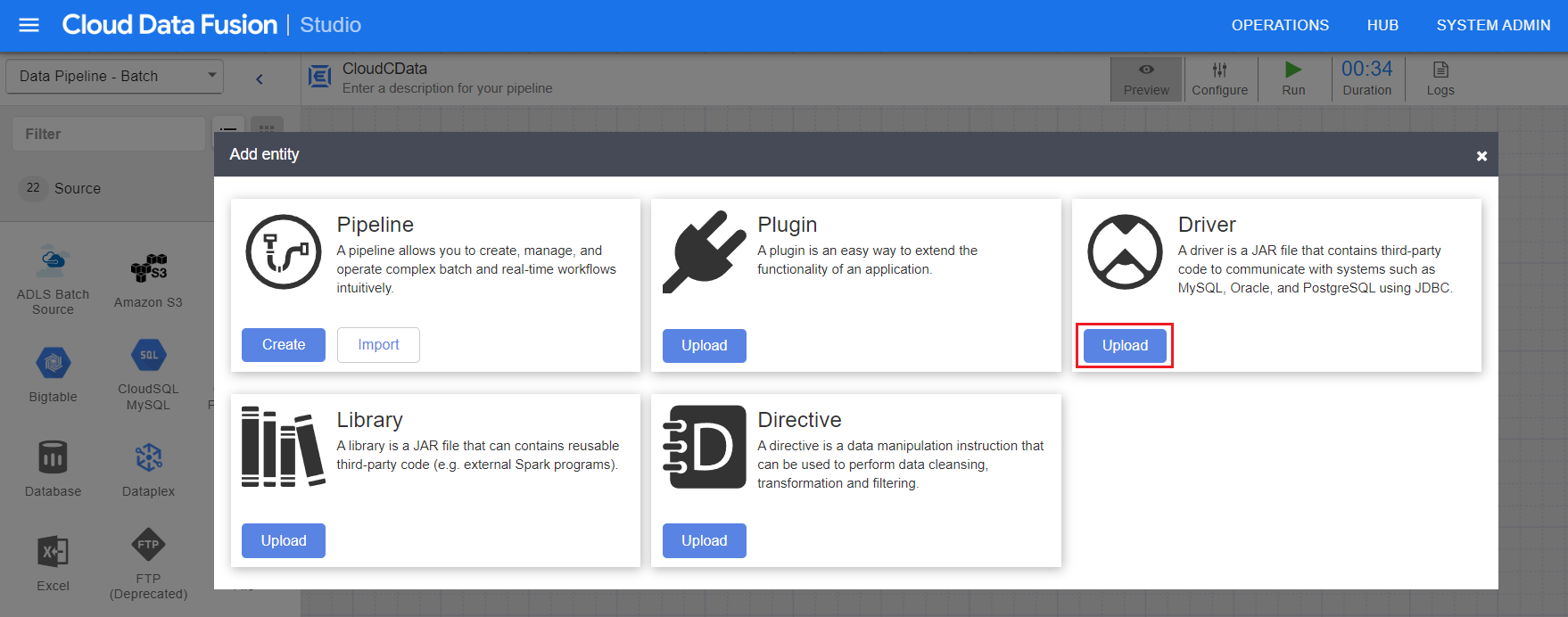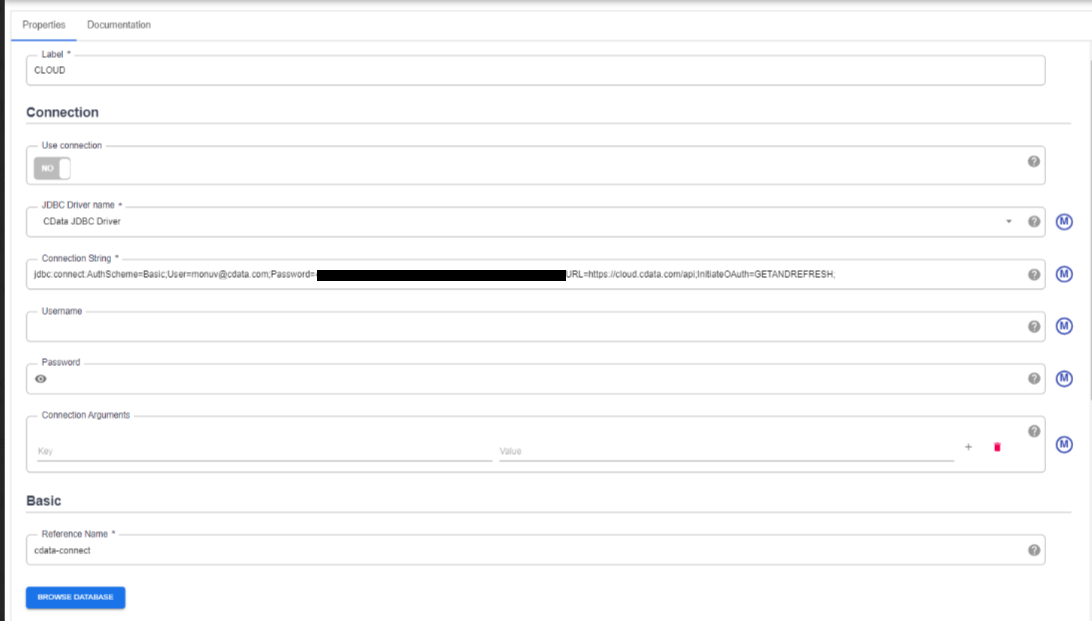Discover how a bimodal integration strategy can address the major data management challenges facing your organization today.
Get the Report →Build Pipelines with Live Amazon Athena Data in Google Cloud Data Fusion (via CData Connect Cloud)
Use CData Connect Cloud to connect to Amazon Athena from Google Cloud Data Fusion, enabling the integration of live Amazon Athena data into the building and management of effective data pipelines.
Google Cloud Data Fusion simplifies building and managing data pipelines by offering a visual interface to connect, transform, and move data across various sources and destinations, streamlining data integration processes. When combined with CData Connect Cloud, it provides access to Amazon Athena data for building and managing ELT/ETL data pipelines. This article explains how to use CData Connect Cloud to create a live connection to Amazon Athena and how to connect and access live Amazon Athena data from the Cloud Data Fusion platform.
Configure Amazon Athena Connectivity for Cloud Data Fusion
Connectivity to Amazon Athena from Cloud Data Fusion is made possible through CData Connect Cloud. To work with Amazon Athena data from Cloud Data Fusion, we start by creating and configuring a Amazon Athena connection.
- Log into Connect Cloud, click Connections and click Add Connection
![Adding a Connection]()
- Select "Amazon Athena" from the Add Connection panel
![Selecting a data source]()
-
Enter the necessary authentication properties to connect to Amazon Athena.
Authenticating to Amazon Athena
To authorize Amazon Athena requests, provide the credentials for an administrator account or for an IAM user with custom permissions: Set AccessKey to the access key Id. Set SecretKey to the secret access key.
Note: Though you can connect as the AWS account administrator, it is recommended to use IAM user credentials to access AWS services.
Obtaining the Access Key
To obtain the credentials for an IAM user, follow the steps below:
- Sign into the IAM console.
- In the navigation pane, select Users.
- To create or manage the access keys for a user, select the user and then select the Security Credentials tab.
To obtain the credentials for your AWS root account, follow the steps below:
- Sign into the AWS Management console with the credentials for your root account.
- Select your account name or number and select My Security Credentials in the menu that is displayed.
- Click Continue to Security Credentials and expand the Access Keys section to manage or create root account access keys.
Authenticating from an EC2 Instance
If you are using the CData Data Provider for Amazon Athena 2018 from an EC2 Instance and have an IAM Role assigned to the instance, you can use the IAM Role to authenticate. To do so, set UseEC2Roles to true and leave AccessKey and SecretKey empty. The CData Data Provider for Amazon Athena 2018 will automatically obtain your IAM Role credentials and authenticate with them.
Authenticating as an AWS Role
In many situations it may be preferable to use an IAM role for authentication instead of the direct security credentials of an AWS root user. An AWS role may be used instead by specifying the RoleARN. This will cause the CData Data Provider for Amazon Athena 2018 to attempt to retrieve credentials for the specified role. If you are connecting to AWS (instead of already being connected such as on an EC2 instance), you must additionally specify the AccessKey and SecretKey of an IAM user to assume the role for. Roles may not be used when specifying the AccessKey and SecretKey of an AWS root user.
Authenticating with MFA
For users and roles that require Multi-factor Authentication, specify the MFASerialNumber and MFAToken connection properties. This will cause the CData Data Provider for Amazon Athena 2018 to submit the MFA credentials in a request to retrieve temporary authentication credentials. Note that the duration of the temporary credentials may be controlled via the TemporaryTokenDuration (default 3600 seconds).
Connecting to Amazon Athena
In addition to the AccessKey and SecretKey properties, specify Database, S3StagingDirectory and Region. Set Region to the region where your Amazon Athena data is hosted. Set S3StagingDirectory to a folder in S3 where you would like to store the results of queries.
If Database is not set in the connection, the data provider connects to the default database set in Amazon Athena.
![Configuring a connection (Salesforce is shown)]()
- Click Create & Test
- Navigate to the Permissions tab in the Add Amazon Athena Connection page and update the User-based permissions.
![Updating permissions]()
Add a Personal Access Token
If you are connecting from a service, application, platform, or framework that does not support OAuth authentication, you can create a Personal Access Token (PAT) to use for authentication. Best practices would dictate that you create a separate PAT for each service, to maintain granularity of access.
- Click on your username at the top right of the Connect Cloud app and click User Profile.
- On the User Profile page, scroll down to the Personal Access Tokens section and click Create PAT.
- Give your PAT a name and click Create.
- The personal access token is only visible at creation, so be sure to copy it and store it securely for future use.

With the connection configured, you are ready to connect to Amazon Athena data from Cloud Data Fusion.
Connecting to Amazon Athena from Cloud Data Fusion
Follow these steps to establish a connection from Cloud Data Fusion to Amazon Athena through the CData Connect Cloud JDBC driver:
- Download and install the CData Connect Cloud JDBC driver:
- Open the Client Tools page of CData Connect Cloud.
- Search for JDBC or Cloud Data Fusion.
- Click on Download and select your operating system (Mac/Windows/Linux).
- Once the download is complete, run the setup file.
- When the installation is complete, the JAR file can be found in the installation directory (inside the lib folder).
- Log into Cloud Data Fusion.
- Click the green "+" button at the top right to add an entity.
- Under Driver, click Upload.
![Upload the driver JAR file]()
- Now, upload the CData Connect Cloud JDBC driver (JAR file).
- Enter the driver settings:
- Name: Enter the name of the driver
- Class name: Enter "cdata.jdbc.connect.ConnectDriver"
- Version: Enter the driver version
- Description (optional): Enter a description for the driver
![Enter the driver settings]()
- Click on Finish.
- Enter source configuration settings:
- Label: Helps to identify the connection
- JDBC driver name: Enter the JDBC driver name to identify the driver configured in Step 6.
- Connection string: Enter the JDBC connection string and include the following parameters in it:
jdbc:connect:AuthScheme=Basic;User=[User];Password=[Password]; - User: Enter your CData Connect Cloud username, displayed in the top-right corner of the CData Connect Cloud interface. For example, "[email protected]"
- Password: Enter the PAT you generated on the Settings page.
![Enter the source configuration settings]()
- Click Validate in the top right corner.
- If the connection is successful, you can manage the pipeline by editing it through the UI.
![Build and manage the pipeline in the UI]()
- Run the pipepline created.
![Run the pipeline]()
Troubleshooting
Please be aware that there is a known issue in Cloud Data Fusion where "int" types from source data are automatically cast as "long".
Live Access to Amazon Athena Data from Cloud Applications
Now you have a direct connection to live Amazon Athena data from from Google Cloud Data Fusion. You can create more connections to ensure a smooth movement of data across various sources and destinations, thereby streamlining data integration processes - all without replicating Amazon Athena data.
To get real-time data access to 100+ SaaS, Big Data, and NoSQL sources (including Amazon Athena) directly from your cloud applications, explore the CData Connect Cloud.















